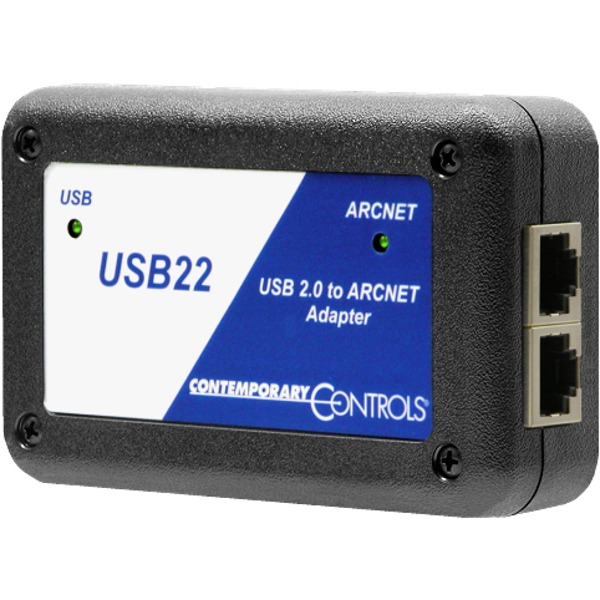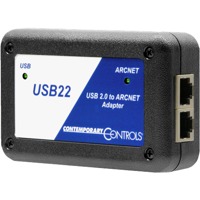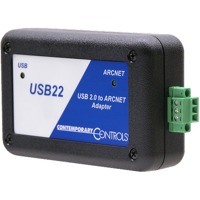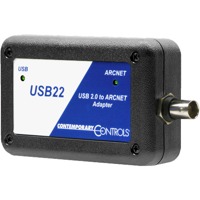USB22 Serie - Network Interface Modules for USB Computers
To overcome the inherent non-real-time response of Windows®, Contemporary Controls released the USB22 Series of USB 2.0 to ARCNET adapters. ARCNET’s determinism has been compromised by a PCMCIA adapter because typical operating systems cannot service the devices in a timely fashion, causing lost or missed messages. The USB22 deep memory buffer holds messages until the OS can service the device — so missed messages are rare — even if operating at 10 Mbps (four times the standard ARCNET data rate of 2.5 Mbps).
The Universal Serial Bus (USB) has become a well-known method for connecting either desktop or laptop computers to peripherals because it provides a very high-speed interface (up to 480 Mbps).
Using the COM20022 controller, the USB22 represents the latest ARCNET technology — supporting data rates as high as 10 Mbps. Models exist for most recognized ARCNET physical layers. A high-performance microcontroller handles the transfer of data between ARCNET and USB. The NIM is powered from the USB port on the computer.
This product is compatible with the USB 2.0 standard, for extremely fast and convenient access to an ARCNET network without the need to install a NIM into a computer. Since most modern computers are sold equipped with a USB port, it is only necessary to directly connect between the computer and the USB22. The USB22 also operates with the earlier lower-speed USB 1.1 standard.
The USB22 receives its power from the USB port on the USB computer. It is available in several models that will support DC- or AC-coupled EIA-485, coaxial bus or twisted-pair networks. It is shipped with a CD containing a Windows 2K/XP/Vista/7 compatible DLL and driver, along with a USB cable.





